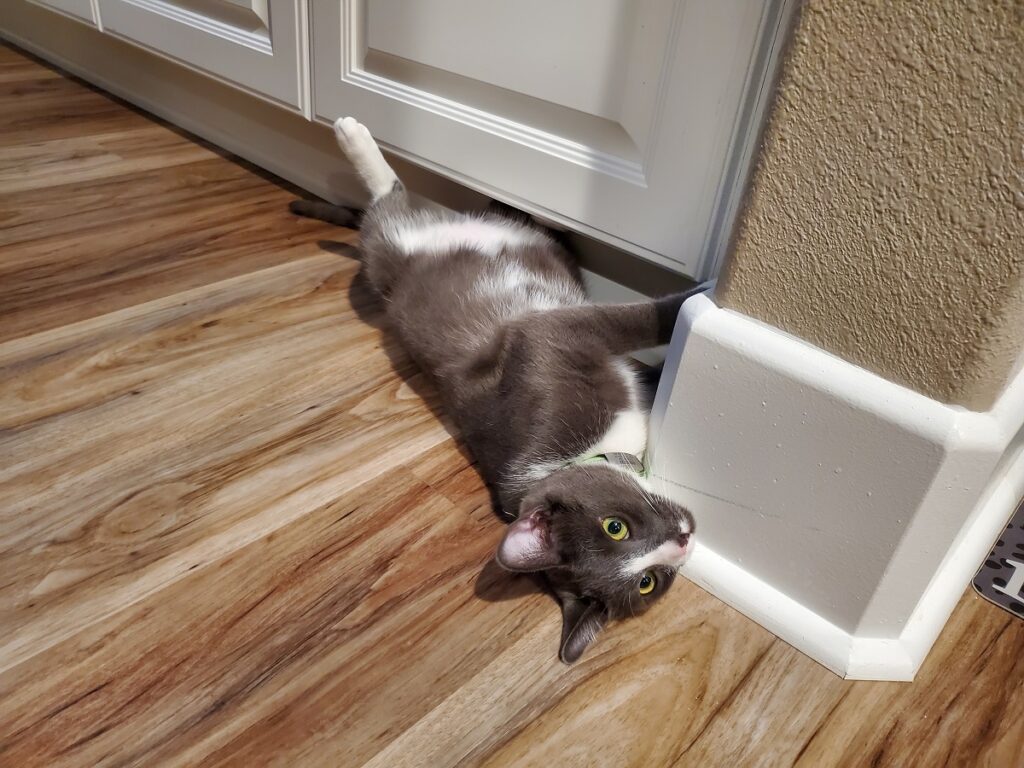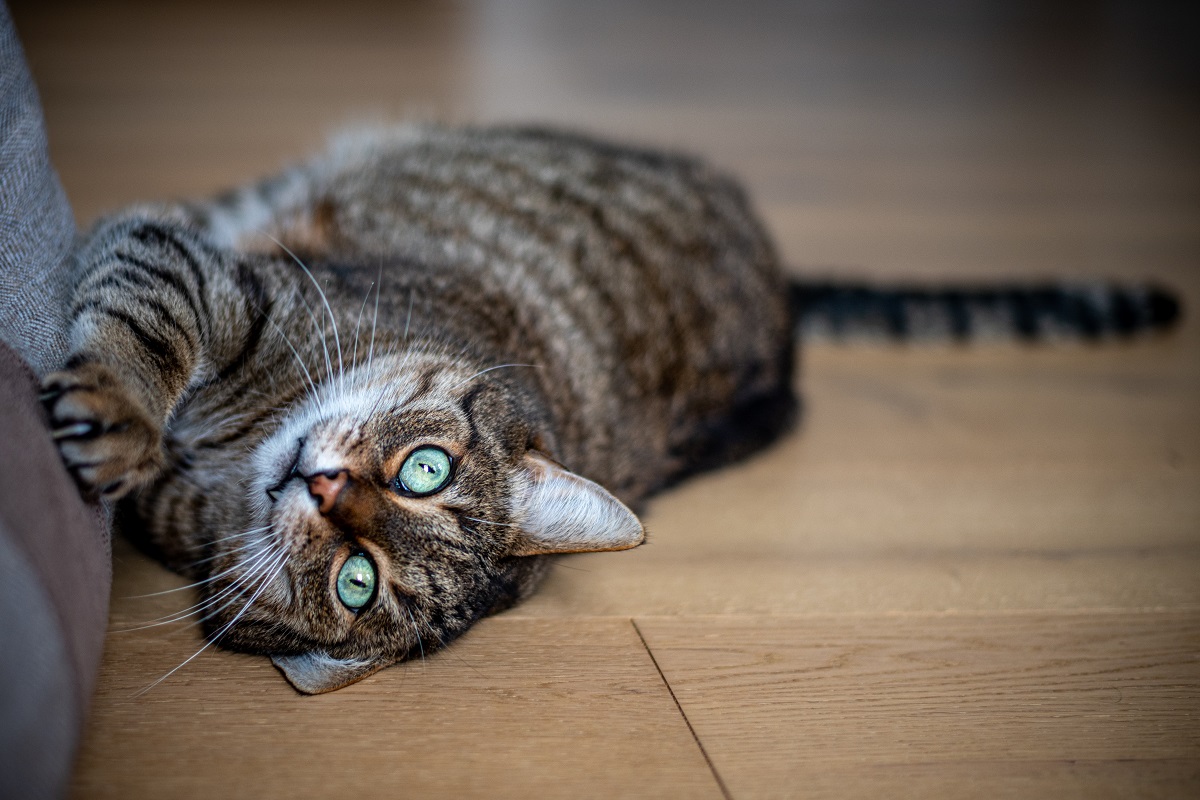You lovingly picked out that sofa. It was the right shade of gray, the fabric was “pet-friendly,” and it looked perfect in the living room. And now? It looks like it lost a fight with a lawnmower. If your cat has turned your furniture into a scratching post buffet, you are definitely not alone.
Scratching is one of the most natural things a cat can do, but that does not mean it has to be aimed directly at your antique armchair. With a little understanding and a few smart tweaks, you can protect your furniture without turning your living room into a feline fortress.
Scratching Is Not Just for Sharpening Claws
Let’s clear up a myth right away. Cats do not scratch because they are being bad or trying to upset you. Scratching is built into their DNA. It serves several very important purposes:
- Claw maintenance: Scratching removes the outer layer of the claw, keeping them sharp and healthy
- Stretching muscles: Especially the ones in their shoulders, back, and paws
- Scent marking: Cats have scent glands in their paws, and scratching leaves both a visible and invisible mark
- Stress relief: It helps them release tension or energy
So when your cat tears into your furniture, it is not personal. It is instinct.
Your Cat May Not Like the Scratching Options You Gave Them
You might already have a scratching post, but here is the truth: one sad little pole in the corner does not cut it. Cats can be surprisingly picky about where and what they scratch. If their preferences are not being met, they will find their own alternatives. Spoiler alert: those alternatives are usually upholstered.
When choosing a scratching post or pad, keep these things in mind:
- Texture matters: Many cats prefer rough materials like sisal, cardboard, or wood
- Stability is key: If it wobbles or tips, they will not use it again
- Orientation makes a difference: Some cats like to scratch vertically, others horizontally
- Location counts: Put the scratching area near where they already like to scratch, not hidden in a random room they never enter
Offering a few different types in multiple places is usually the winning strategy.
Furniture Is Often in the Perfect Scratching Spot
Let’s say you are a cat. You wake up from a nap on the couch, stretch luxuriously, and… oh look, the armrest is right there. It has a great angle, it smells like home, and your human sits there every day. Scratching it feels natural and comforting.
Furniture ends up scratched because it is convenient, comforting, and prominently placed. If you want to redirect your cat, you need to offer them something just as appealing nearby. Put a scratching post next to their favorite furniture target and reward them for using it. Once the habit is established, you can slowly move the post to a better location.
Stress Can Lead to Scratching Surges
If your cat is suddenly scratching more, especially in new places, they might be dealing with anxiety or changes in their environment. Scratching helps cats self-soothe, and it is often a go-to coping mechanism when things feel off.
Common stressors include:
- Moving or rearranging furniture
- New people or pets in the house
- Loss of a companion
- Sudden schedule changes
- Lack of stimulation or playtime
Try to identify and minimize the source of stress, and offer more enrichment and attention. Interactive toys, window perches, and playtime can work wonders.
Scent Marking and Territory Claims
Cats are territorial creatures. When they scratch, they are doing more than just flexing their paws. They are leaving scent marks and visual signals that say, “This is mine”.
If you have multiple pets or live in a space with outdoor animals nearby, your cat might feel the need to double down on their territory. Furniture often becomes the target because it sits in the most “important” areas of the house.
If this sounds familiar, try placing scent-soaked scratching pads (they sell catnip-infused ones for this exact reason) around the home, especially near doors, windows, or high-traffic spots. Giving your cat ways to mark their turf can reduce the need to claw every cushion in sight.
Deterrents Can Work, But Only If You Provide Alternatives
There are sprays, sticky tapes, and covers that can help keep claws off furniture. They are useful, but only if you offer a better option at the same time. If your cat no longer has access to their favorite couch corner but has nowhere else to scratch, they will just move on to another forbidden surface.
If you use deterrents:
- Pair them with nearby scratching posts
- Make the new scratching option very appealing (catnip, toys, praise)
- Avoid punishment or yelling, which only causes fear
The goal is to redirect the behavior, not eliminate it. Because scratching is a need, not a choice.

Just between us, scratching the humans’ furniture is one of our secret joys. I’ve learned that the taller the furniture, the more dramatic their reaction. The best is when they’ve just put together something they call “IKEA”. Trust me, nothing says ‘Welcome home, new bookcase’ like a good scratch down the side. But remember, always act innocent when they find out – it’s a game of cat and… well, mostly just confused human. #CatLife #ScratchConfessions #FurnitureIsOurCanvas #ThisIsWhyWeCantHaveNiceThings
Winston
Declawing Is Not the Answer
If you are at your wit’s end, you might be tempted to look into declawing. Don’t. Declawing is not a harmless nail trim. It is a surgical amputation that removes part of the bone, and it can lead to chronic pain, behavioral issues, and mobility problems.
There are plenty of humane, effective ways to manage scratching. Your couch may have taken a hit, but your cat deserves better than losing their natural defenses and comfort behaviors.
Please, please, please… do NOT declaw your cat!
Final Thoughts: You Can Have a Cat and a Decent Couch
It might feel like an impossible dream, but with a little strategy, you really can have a scratch-happy cat and intact furniture. Understanding why your cat scratches, providing appealing alternatives, and being consistent with redirection are the keys.
Your cat is not trying to ruin your home. They are just being a cat. And if you play your cards right, they will gladly trade your couch for a custom cat condo wrapped in sisal and scented with catnip.
Just don’t expect them to give up on climbing it.
Sources:
Understanding Cat Scratching https://www.humanesociety.org/resources/why-do-cats-scratch
Feline Behavior Problems: Destructive Scratching https://vcahospitals.com/know-your-pet/destructive-scratching-in-cats
Managing Your Cat’s Clawing Behavior https://www.aspca.org/pet-care/cat-care/common-cat-behavior-issues
Why Cats Need to Scratch https://icatcare.org/advice/scratching/
Recent Posts
Your Cat Might Be a Furry Little Healer… or at Least a Fuzzy Alarm System If you’ve ever had your cat suddenly become extra clingy when you’re under the weather, you’re not alone. From...
Cats are experts at hiding things, socks under furniture, their disdain for your playlist, and, unfortunately, symptoms of illness. In the wild, showing weakness could make them a target, so even...


